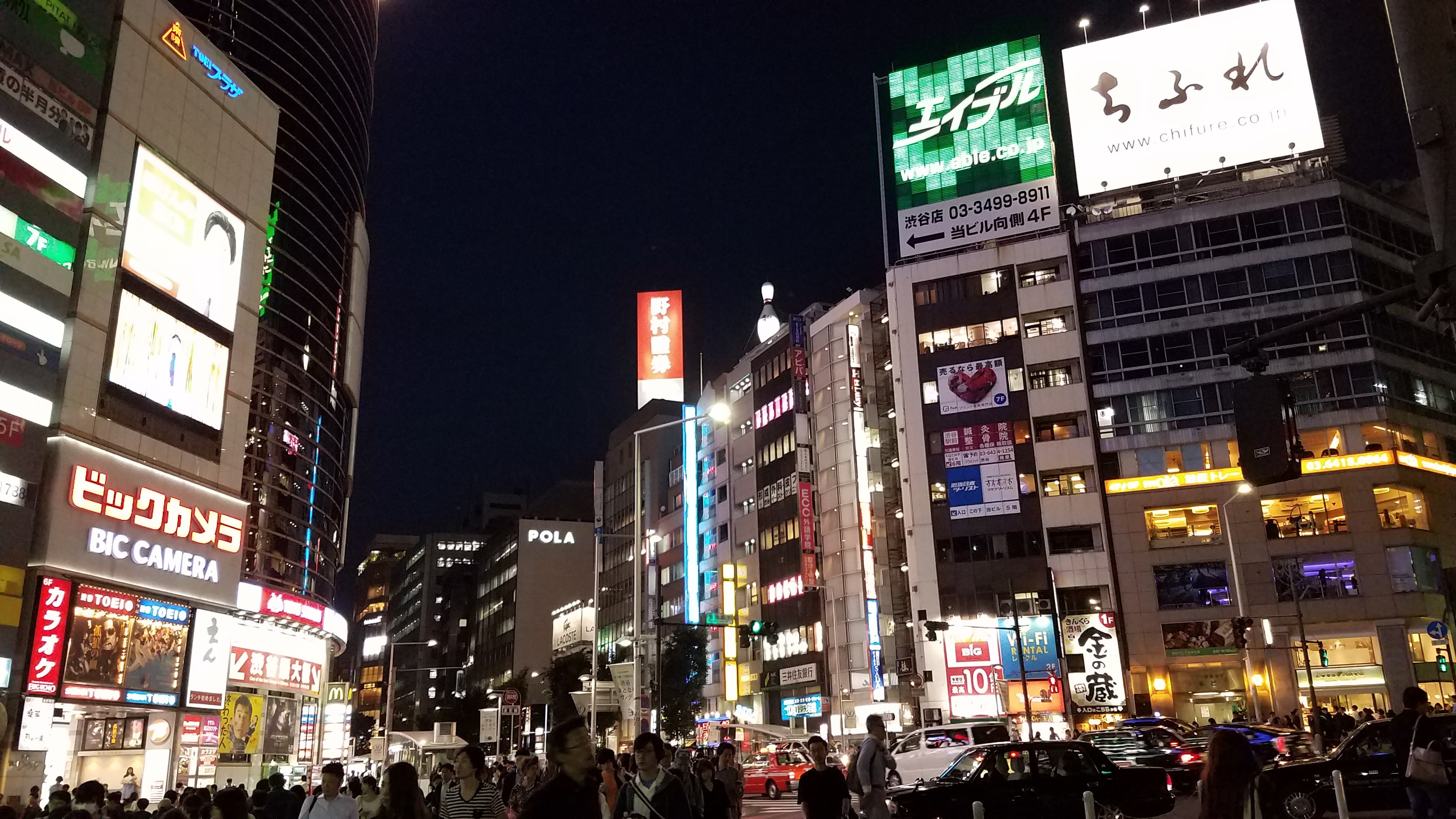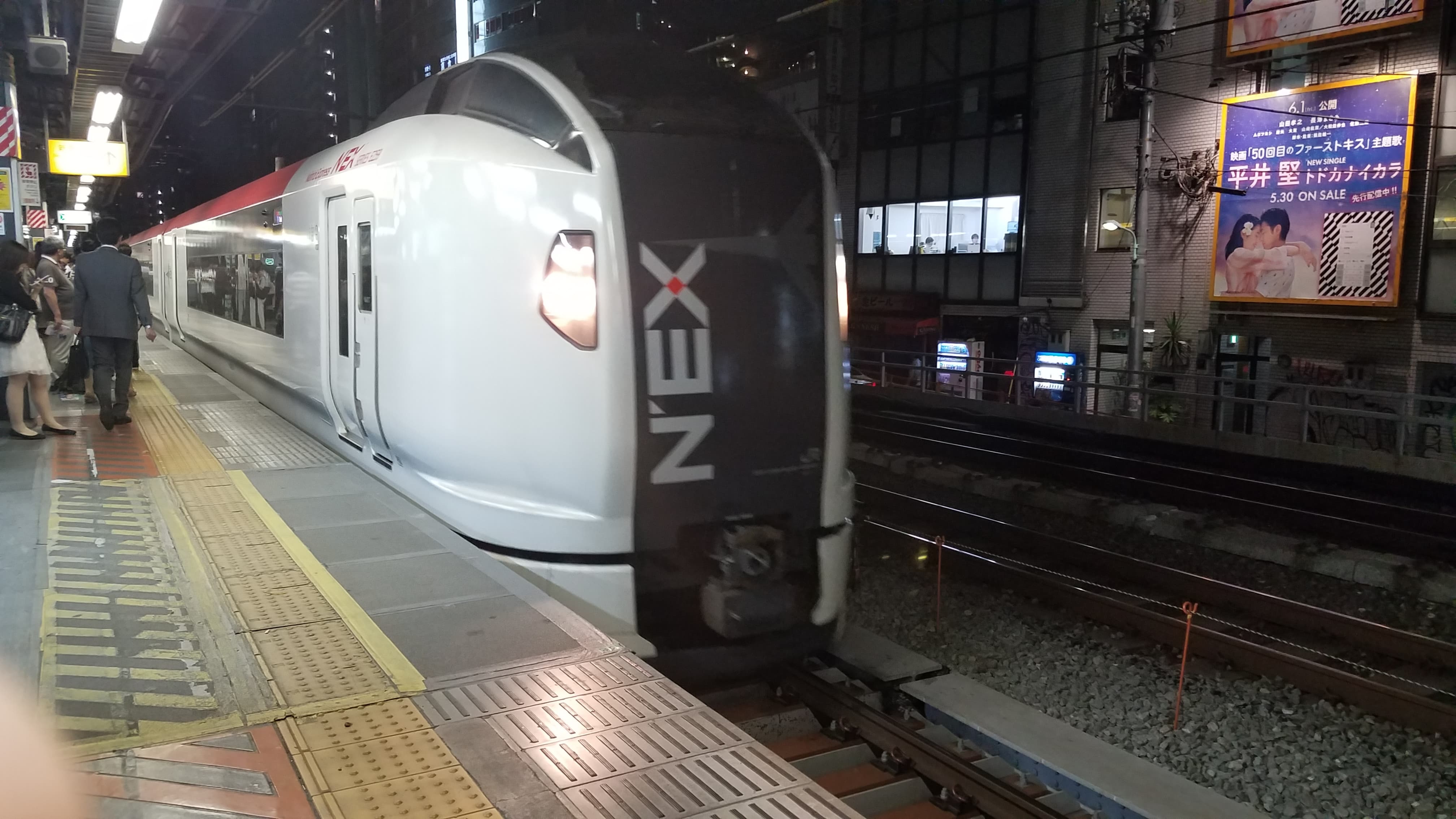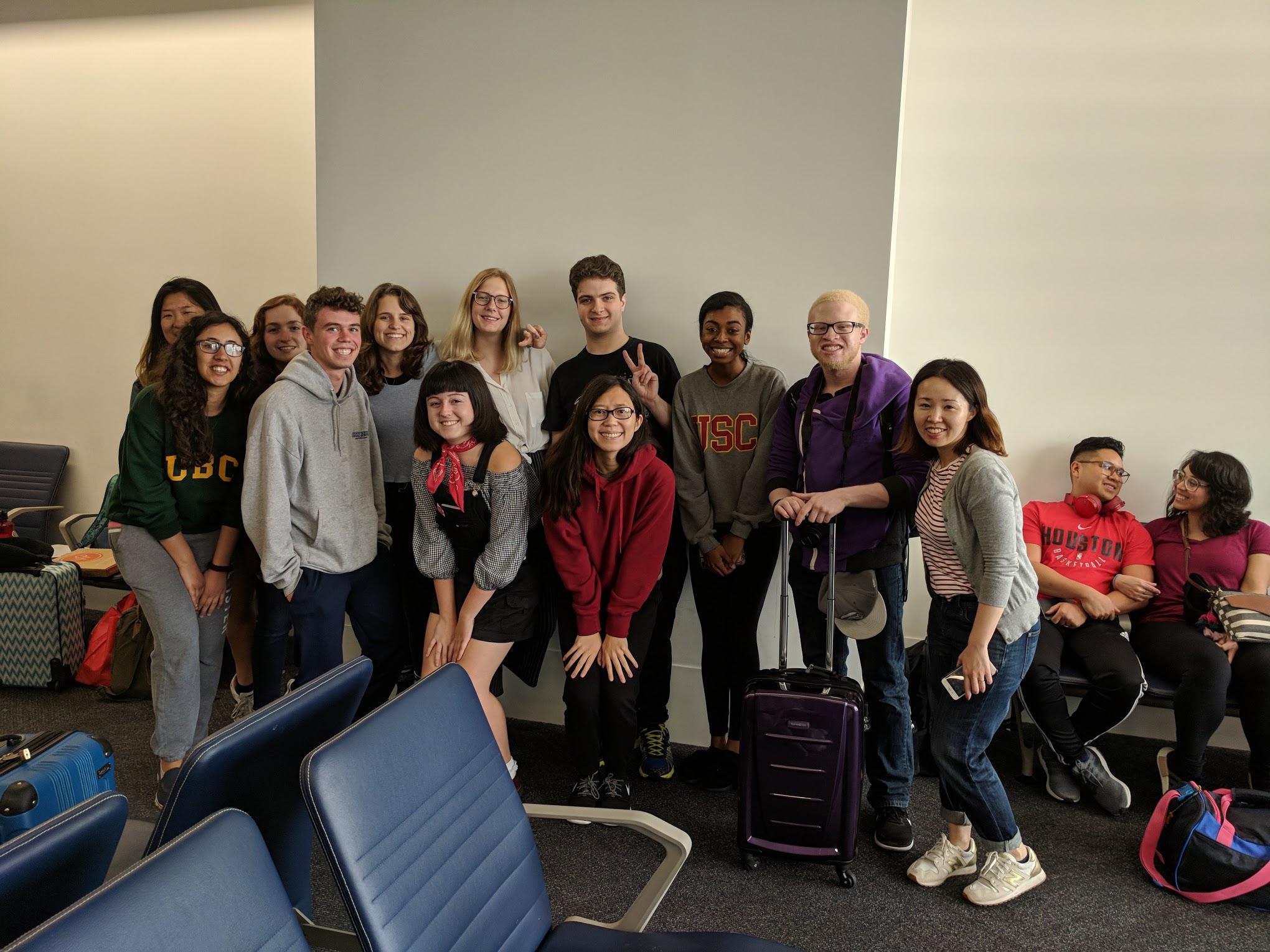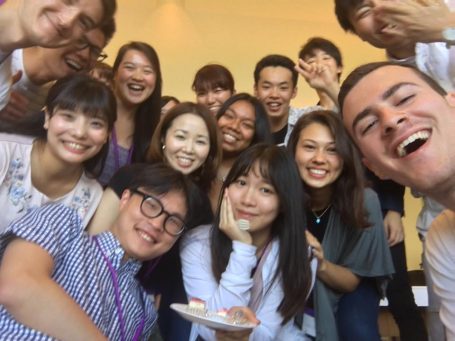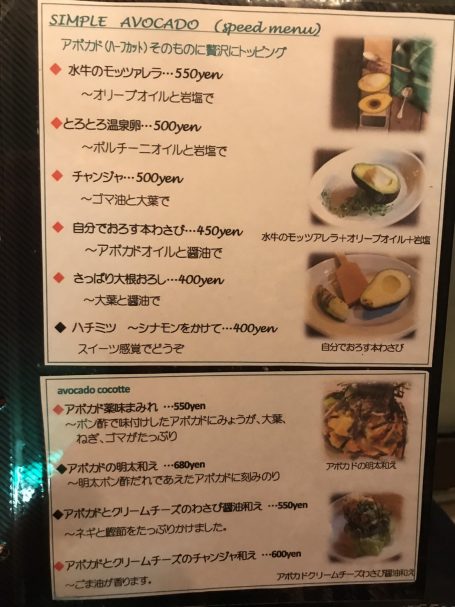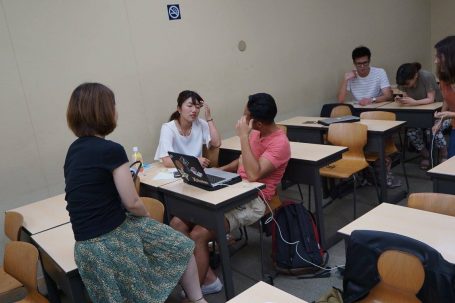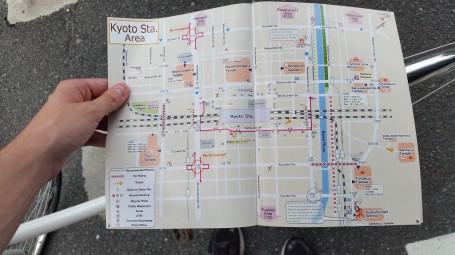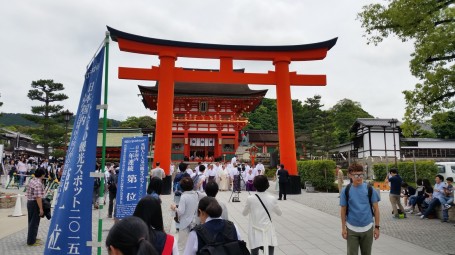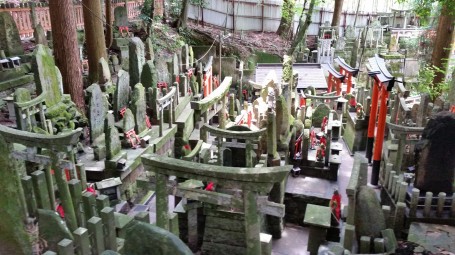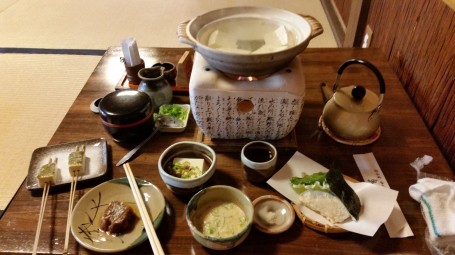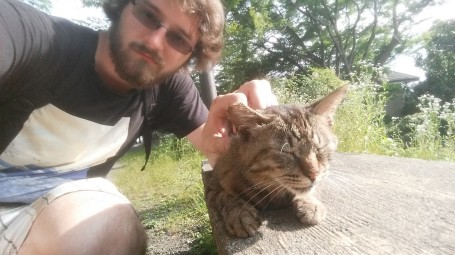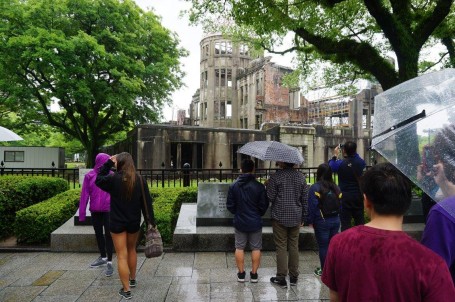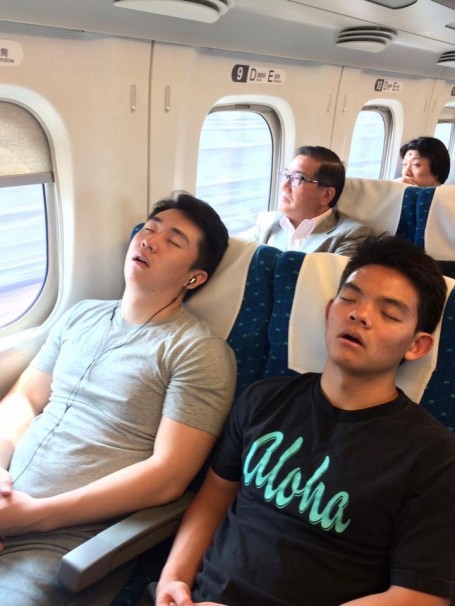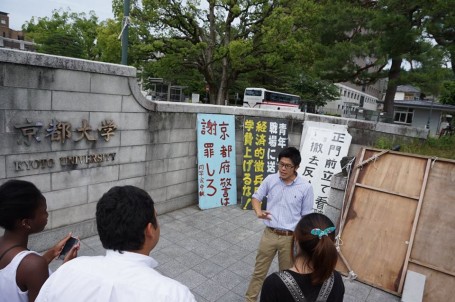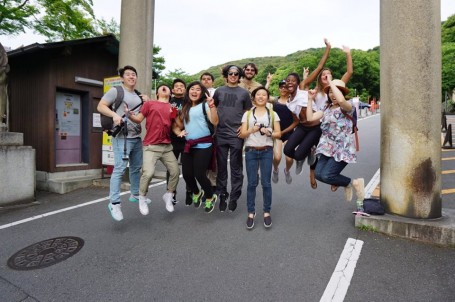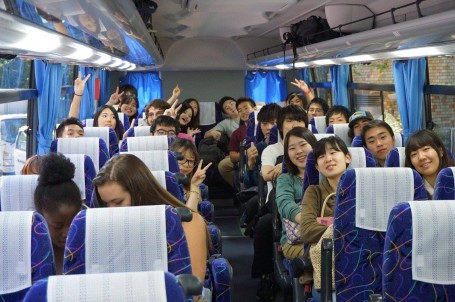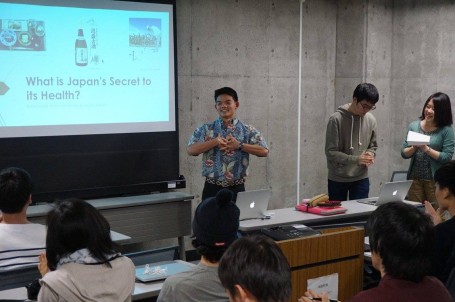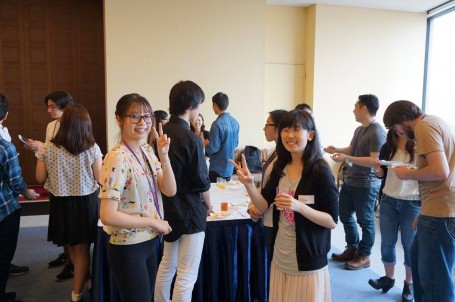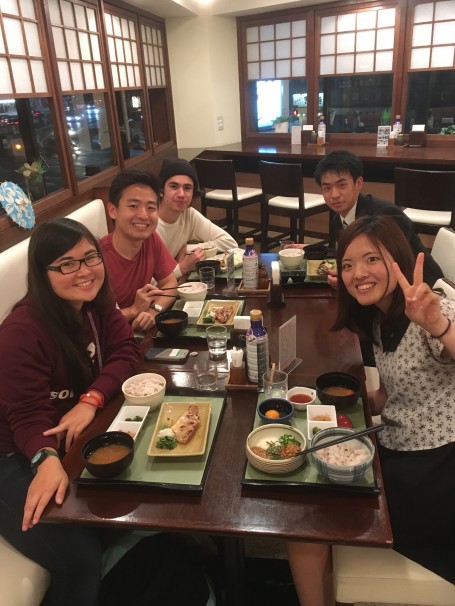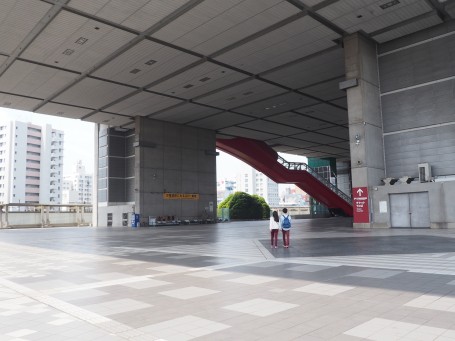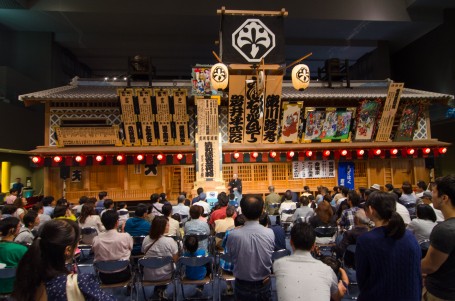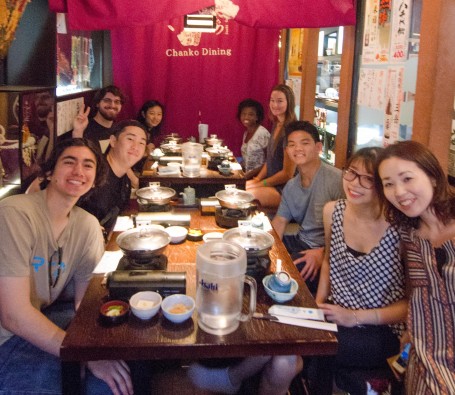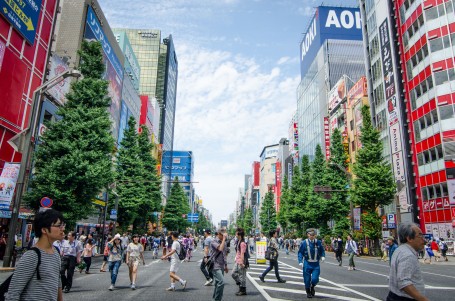By: Alexander Maertens
We started off the day on a plane. As we approached Narita airport in Tokyo, it was raining and a thick fog obscured our vision so we did not even realize how close we were to the ground as we made our descent. We all landed safely, passed through immigration and customs, and collected our checked bags. The first thing everyone noticed when we got off the plane was the humidity! Even while still inside the air-conditioned airport we could feel the wave of hot, moist air cling to our skin. Still at Narita airport, we split up into groups for a moment and some people went to go exchange their American currency for Japanese Yen and others went to go retrieve SIM cards and pocket WiFi. After a long 11 hour flight, the GEA group was pretty exhausted but equally excited to finally be in Japan.
Next, we had to make our way from the airport to Sakura Hotel in Jimbocho. We carefully followed Professor Katada’s lead, filed in a single line like ducklings, as we walked to the train station. At this point we took an express train from the airport to Tokyo Station. Once again assuming the duckling formation, we made way through the Tokyo Metro’s labyrinth of underground twists and turns, crowds of people all on their commutes home, and many flights of stairs to get from train to train. In a remarkable collective effort, we all made it in one piece through the metro to finally arrive in Jimbocho.
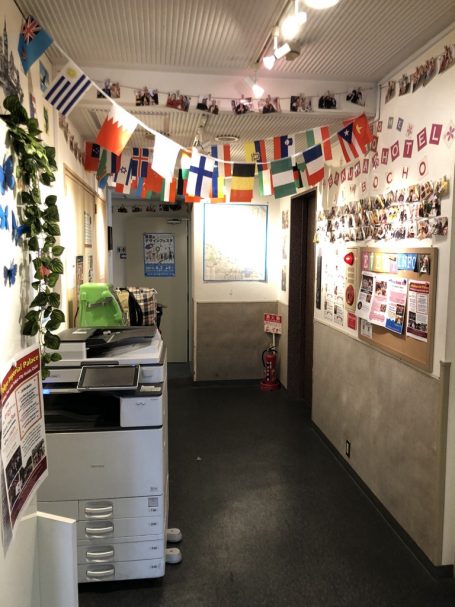
Lobby of Sakura Hotel in Jimbocho
At the Sakura Hotel, we were able to meet our TA, Kyohei, and check in to our rooms. The Sakura Hotel was, in a word…cozy. The small rooms and narrow hallways were emblematic of Tokyo’s compact nature. The hotel lobby was nicely decorated with flags from all around the world and there were other gaikokujin (foreigners) sitting in the small cafeteria which created a sense of welcoming for our crew.
After receiving our room assignments from Kyohei, we all dropped off our luggage in our rooms and began thinking about the next challenge of the day: What are we going to eat!? When we landed it was around 4:30 p.m. and by now it was close to 9:00 p.m. We had been traveling for an entire day and everyone was tired and hungry. For our first meal in Japan, the choice was obvious to us all, Family Mart! Without even coordinating, we all ended up meeting at the convenience store just a block away from the Sakura Hotel. The selection and quality of food at the Family Mart is so much better than any convenience store in the United States. Some of the things we were able to get included, chicken skewers, bento boxes, onigiri (rice balls), and noodles. Everyone also made sure to stock up on water because even just the five-minute walk from the train station to the Sakura Hotel had us all dehydrated. As we prepare for our first full day in Japan tomorrow, keeping hydrated will certainly be one of our top priorities for staying energized.

One of our rooms in Sakura Hotel
After eating our food in the front cafeteria of the hotel and with jet lag already sinking in, we all retired to our rooms, took showers and went to sleep. Here’s to the start of our Japanese adventure!


